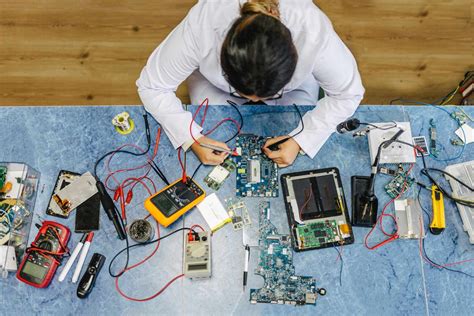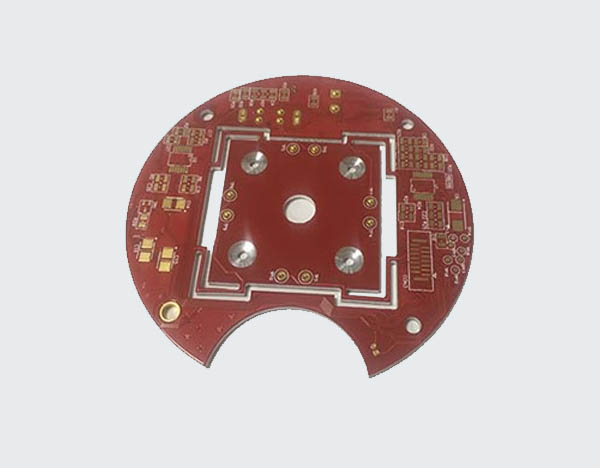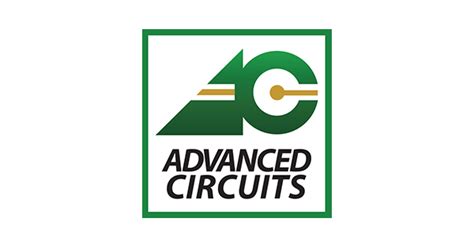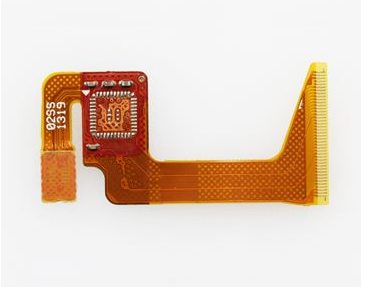Mastering Circuit Board Assembly: A Guide to Perfection
Key Takeaways
In the realm of pcb assembly, understanding the fundamentals is crucial for achieving excellence in the process. PCBA is not just about connecting components; it involves a careful orchestration of techniques and tools to ensure reliability and functionality. One of the key factors is selecting the right materials, as this lays the foundation for successful assembly. Employing appropriate soldering methods, such as wave or reflow soldering, can dramatically improve joint strength and overall quality. Additionally, being aware of common pitfalls is essential; simple errors like misalignment or incorrect component placement can lead to significant setbacks in production. To enhance your skills further, embracing continuous learning through advanced techniques and staying updated on industry trends will enable you to solve increasingly complex designs with confidence. Furthermore, rigorous quality control measures must be implemented throughout the pcb assembly process to minimize defects and ensure that each unit meets required standards. Through practical experience and a commitment to perfection, anyone can master the intricacies of pcba, leading to superior product outcomes.
Understanding Circuit Board Fundamentals
To excel in pcb assembly, one must grasp the underlying principles that govern the design and functionality of circuit boards. A printed circuit board (PCB) serves as a foundation for electronic components, ensuring connections are made and signals are transmitted efficiently. The two primary types of PCBs are single-sided and double-sided, each offering unique advantages depending on the complexity of the design.
Understanding basic components, such as resistors, capacitors, and integrated circuits, is vital in pcba (printed circuit board assembly). Each component plays a crucial role in circuit functionality, impacting everything from power distribution to signal processing. Proper understanding of component placement is essential for ensuring minimal signal interference and optimal performance.
Here’s a simple overview of essential PCB elements:
| Component | Function |
|---|---|
| Resistor | Limits current flow |
| Capacitor | Stores electrical charge |
| Inductor | Stores energy in a magnetic field |
| Transistor | Acts as a switch or amplifier |
“Proper knowledge of circuit elements is crucial to prevent malfunction during the assembly process.”
Moreover, familiarity with the layers within multi-layered PCBs is critical; these layers include conductive pathways that enhance the board’s capability to manage complex circuitry. Therefore, understanding both component functionality and board construction will significantly enhance one’s proficiency in creating effective assemblies.
In summary, mastering these fundamentals not only aids in efficient pcb assembly, but also prepares one for tackling more advanced techniques and challenges within electronic manufacturing and design.
Essential Tools for Circuit Board Assembly
To achieve excellence in pcb assembly, having the right tools at your disposal is essential. Tools that facilitate the pcba process can significantly influence both efficiency and quality. First and foremost, a reliable soldering iron is crucial; it allows for precise solder application, making it a cornerstone of effective assembly. Pairing it with the right solder, whether leaded or lead-free, can impact joint integrity.
Additionally, using high-quality tweezers is indispensable for handling small components with accuracy. They enable careful placement and manipulation of delicate parts on the board, ensuring that every piece aligns perfectly during the assembly process. A magnifying glass or microscope may also prove beneficial; these tools enhance visibility, allowing you to inspect connections and components closely.
Furthermore, a multimeter is essential for testing electrical connections and ensuring continuity throughout your pcb assembly. This tool allows you to identify potential issues early on, saving time during later stages of assembly. Lastly, adopting a good organizational system for your workspace not only streamlines the workflow but also minimizes the risks of losing small parts.
Investing in these essential tools creates a solid foundation for superior pcba outcomes while also enhancing your overall proficiency in circuit board assembly. With practice and the right equipment in hand, assembling circuit boards becomes a more manageable and rewarding endeavor.
Step-by-Step Techniques for Flawless Assembly
Achieving outstanding results in pcb assembly requires a meticulous approach, incorporating both precision and attention to detail. First and foremost, it’s crucial to start with a thorough cleaning of the circuit board, as any residue can hinder the soldering process. Next, aligning components accurately on the board is essential; utilizing aids like alignment jigs can enhance this step. Once everything is positioned, apply solder paste using a stencil to ensure an even distribution—this is vital for effective adhesion. Following this, the next stage involves placing the components on the pcb and reflowing in a dedicated oven to achieve optimal melting of the solder. During this phase, employing a thermal profile specifically tailored for your components can prevent overheating or insufficient solder joint formation, both of which are common pitfalls in pcba processes. Inspecting each joint under a microscope after assembly ensures that any potential defects are identified early on. Mastering these step-by-step techniques not only fosters skill enhancement but also significantly boosts confidence in executing proficient circuit board assembly, paving the way for producing high-quality electronic products today and into the future.
Common Mistakes and How to Avoid Them
In the world of pcb assembly, even minor oversights can lead to significant issues in functionality and reliability. One common mistake is the misalignment of components. During the pcba process, ensuring that components are correctly oriented and positioned is crucial for optimal performance. Skipping thorough checks can result in faults that not only affect the specific board but could also lead to widespread implications in connected devices.
Another frequent issue is the improper use of soldering techniques. Many newcomers tend to apply too much solder or use the wrong type, which can create shorts between components or lead to inadequate connections. It’s essential to grasp proper soldering methods and use tools like a quality soldering iron or reflow oven, adapting techniques based on component type and board design.
Additionally, neglecting static precautions is another pitfall that can have devastating effects on electronic components during assembly. Using anti-static mats, wrist straps, and appropriate storage methods for sensitive parts will help mitigate damage from electrostatic discharge (ESD).
Keeping a checklist for each assembly job can also prove invaluable in avoiding these errors. Continually refining procedures based on feedback and lessons learned from past projects will elevate quality standards over time.
Ultimately, understanding these common pitfalls in pcb assembly allows you to take proactive measures, leading to a more efficient process and a higher quality end product.
Quality Control Best Practices
In the realm of pcb assembly, maintaining a high standard of quality is paramount to ensuring the finished product meets its specifications and performs reliably. Implementing robust quality control practices begins with comprehensive planning and extends through every stage of the pcba process. First and foremost, establishing clear quality benchmarks enables teams to assess each component and assembly step critically. Utilizing automated optical inspection (AOI) tools can play a crucial role in identifying defects early in the assembly line, helping to catch issues before they escalate.
Moreover, regular training programs for personnel can enhance their understanding of best practices and techniques specific to pcb assembly standards. Encouraging a culture that prioritizes quality can promote proactive problem-solving, allowing individuals to address potential flaws immediately as they arise in the manufacturing process.
Implementing statistical process control (SPC) techniques also aids in monitoring the consistency of pcba production. By analyzing data on defects or variations, teams can make informed decisions about process improvements or adjustments needed to enhance quality. Additionally, conducting thorough testing of final assemblies—such as functional tests, thermal imaging assessments, and stress tests—ensures that each product is reliable and meets customer expectations.
In summary, focusing on meticulous preparation, rigorous inspections, ongoing training, and comprehensive testing protocols establishes a foundation for achieving excellence in circuit board assembly. These practices not only minimize errors but also contribute significantly to elevating overall product quality in today’s competitive market landscape.
Advanced Techniques for Complex Designs
To excel in pcb assembly for intricate designs, one must embrace advanced techniques that enhance both efficiency and precision. Recognizing the unique challenges presented by complex layouts is crucial. Techniques such as blind and buried vias, which allow for optimized space usage on the circuit board, play a significant role in increasing functionality while maintaining compactness. Additionally, leveraging advanced pcba methodologies, like surface mount technology (SMT), provides greater detail and flexibility in component placement, enabling more effective routing of electrical connections.
Adopting automated optical inspection (AOI) systems can drastically improve quality control by identifying potential issues earlier in the process, thus reducing rework and ensuring high reliability of the final product. Furthermore, mastering techniques such as laser cutting for precise component fit can streamline production phases. Implementing these advanced strategies not only leads to higher-quality results but also boosts productivity by minimizing errors associated with manual assembly processes. Therefore, staying updated with the latest innovations in pcb assembly technologies is essential for manufacturers aiming to deliver cutting-edge solutions in today’s competitive landscape.
Troubleshooting Assembly Issues
When engaging in pcb assembly, it is crucial to develop strategies for effectively troubleshooting common assembly issues. Problems can often arise during both the pcba process and the initial setup, resulting in costly delays and defects. One of the first steps in troubleshooting is to ensure that connections are secure; loose solder joints or improperly seated components can cause intermittent failures. It’s essential to conduct thorough visual inspections and utilize tools like multimeters or oscilloscopes to test for electrical continuity. If problems persist, identifying whether the issue lies with the design or manufacturing process is vital. Understanding potential design flaws can help prevent problems in future assemblies. Additionally, reviewing your quality control best practices can further aid in pinpointing what might have gone wrong during assembly. Keeping a log of recurring issues allows for a more systematic approach to troubleshooting, thereby minimizing disruptions and enhancing overall assembly efficiency in future projects.
Future Trends in Circuit Board Assembly
As the electronics industry continues to evolve, several future trends are shaping the landscape of pcb assembly. One notable trend is the growing demand for miniaturization, where components are becoming smaller and more densely packed. This shift necessitates advanced techniques in pcba that ensure precision without compromising quality. Additionally, there is an increasing emphasis on automation in assembly processes. Utilizing robotics and AI technologies not only enhances efficiency but also minimizes human error, leading to more consistent outcomes.
Moreover, the rise of flexible circuits proves pivotal as devices become more portable and versatile. The integration of these flexible designs into circuit board assembly processes challenges traditional manufacturing methods, requiring adaptability in techniques and tools. Another important trend is sustainability; manufacturers are actively seeking eco-friendly materials and processes to reduce waste without sacrificing performance.
In response to market demands, companies are also investing heavily in digital transformation. Advanced simulation software allows for better design verification before actual production starts, ultimately streamlining the overall process of pcb assembly. Staying updated on these trends will be essential for professionals looking to enhance their skills and succeed in this dynamic field of circuit board assembly.
Conclusion
Mastering pcb assembly is not just about following a set of procedures; it’s an art that combines precision, technical skills, and an understanding of the intricate components involved. Throughout this guide, we have explored the essentials of pcba, emphasizing the importance of selecting the right tools and techniques to achieve optimal results. Whether you are working with simple designs or tackling more complex layouts, understanding pcb assembly fundamentals is crucial for delivering high-quality products. It’s essential to remain vigilant about common pitfalls that can arise during the assembly process; even minor errors can lead to significant setbacks. Adopting best practices in quality control ensures that each step in your pcba process meets industry standards and customer expectations. As technology advances, staying informed about future trends in circuit board assembly will help you adapt and innovate within this ever-evolving field. By fostering a commitment to continuous improvement and skill enhancement, you can confidently approach each assembly project with the goal of excellence in mind.
FAQs
What is PCB assembly (PCBA)?
PCB assembly, commonly referred to as PCBA, is the process of assembling electronic components onto a printed circuit board (PCB) to create a functional electronic circuit. This process includes the placement of components, soldering, and testing.
What are the key steps in the PCB assembly process?
The primary steps in pcb assembly involve designing the circuit, creating the PCB, placing components, soldering them onto the board, and conducting thorough testing to ensure functionality.
What tools do I need for successful PCB assembly?
Essential tools for pcb assembly include soldering irons, solder paste dispensers, pick-and-place machines, and inspection microscopes. Having quality tools is crucial for achieving reliability and precision in your assemblies.
How can I avoid common mistakes during PCBA?
To avoid common mistakes during pcba, ensure that you’re following a detailed assembly guide and double-checking component orientations. Familiarize yourself with operational specifications and conduct thorough pre-assembly checks.
What quality control practices are recommended for PCBA?
Implementing best practices in quality control includes regular design reviews, visual inspections after each step of the assembly process, and conducting functional tests on completed assemblies to identify any potential issues early on.






